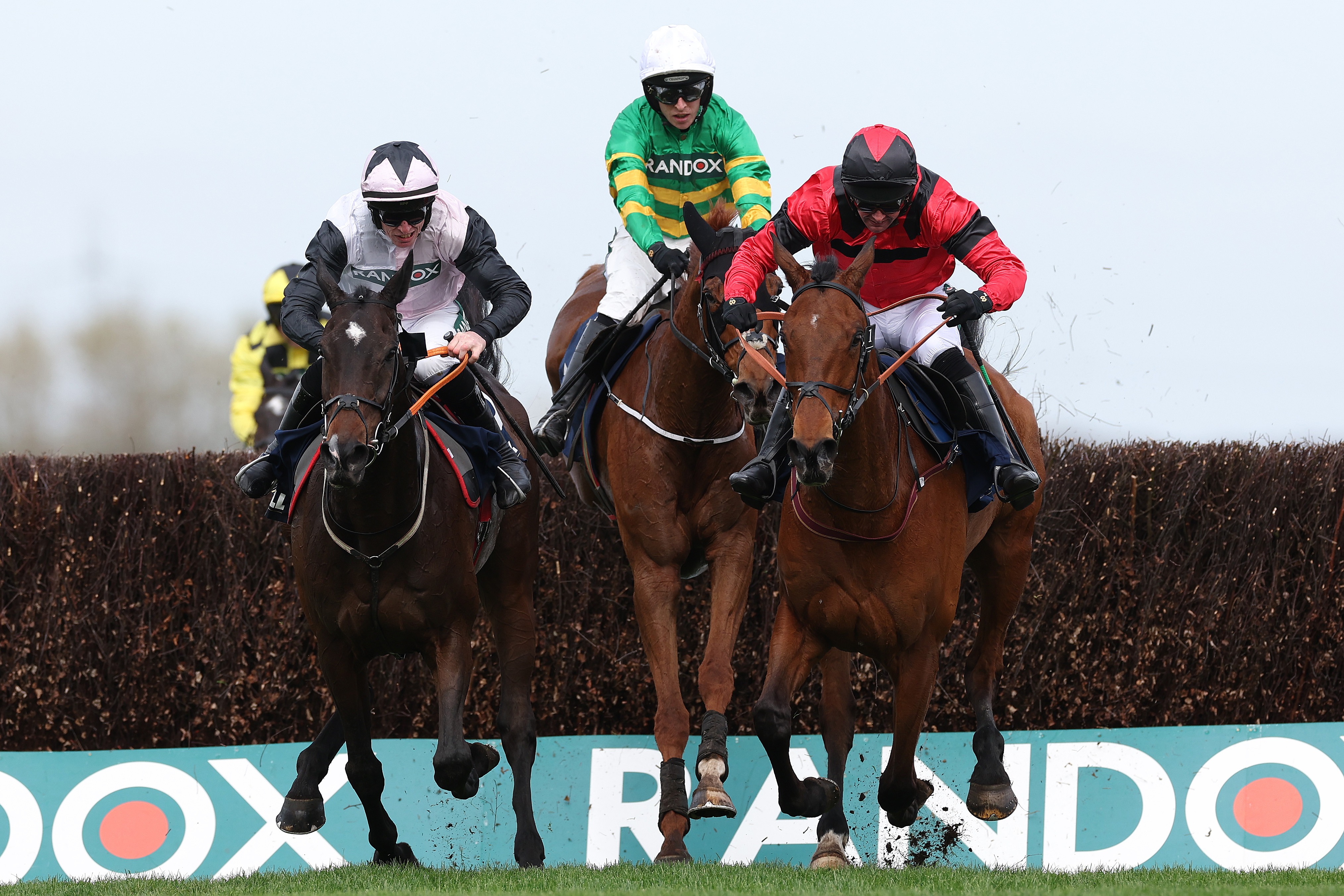Exciting Finish at Aintree
Horaces Pearl emerges victorious in the 5.35 race at Aintree, wrapping up the Grand National Festival in style. Find out how each horse finished below!
Full Aintree Schedule
From thrilling novices' races to exciting chases, here's a recap of the winners from the Aintree Festival spanning three days.
How to Watch Aintree Races
Don't miss a single race at Aintree! Find out where to catch all the action live on TV and streaming platforms.
Gamble Responsibly
Before you place your bets, remember to gamble responsibly. Here are some tips to ensure a safe and enjoyable betting experience.
Frequently Asked Questions
What is the first training step for a racehorse?
The first phase of training a racing horse involves “breaking”, where the horse gets used to wearing a saddle and bridle as well as the weight of the rider. During these sessions, patience is key to ensuring the horse feels comfortable around humans and with the equipment they will use throughout their racing career.
Does a racehorse need a certain type of shoe?
Racing plates are typically lighter and thinner compared to regular horseshoes. These plates provide the necessary traction on the racetrack while minimizing weight. A racehorse farrier will select and fit the shoes according to each horse’s foot conformation, and the surface on which they will be racing.
When can a horse be expected to start racing training?
Although horses can begin basic training at a young age, they usually start more intensive race training and conditioning around the age of two. This is when their bodies are mature enough to handle the stresses of the track while still being young and adaptable for the learning process. The exact timing depends on the horse’s maturity and temperament.
What’s the best kind of diet for racing horses to follow?
A racehorse’s diet must be high in quality and precisely balanced to meet the energetic demands of training and racing. It usually includes a combination high-quality hays, grains (such as oats or barsley) and commercially made feeds for racehorses. A diet that is rich in essential vitamins, minerals and nutrients will support the horse’s health and help them perform at their best.
How often is it recommended that racehorses are trained?
Racehorses are trained according to their individual needs, fitness levels, and race schedule. Typically, they would have a daily routine consisting of exercise such as walking, trotting, and cantering, with more exertive work such as galloping or breezing several times a week to build stamina and speed. Rest days are also important for the horse’s recovery and to prevent overtraining.
How do I condition a horse for racing?
It is important to condition a horse gradually. This includes long distance training to build stamina along with shorter workouts that increase speed. The cardiovascular system, muscle structure, and bone structure of the horse must be developed over time with a specially designed exercise regime that mimics race conditions without injury or stress.
Statistics
- Statistically, less than 1% of thoroughbred foals born each year will go on to win a stakes race.
- An extensive survey indicated that over 90% of racehorse trainers utilize swimming as a low-impact exercise in their conditioning routines.
- Racehorse mortality rates during racing have been observed to be between 1.5 to 2 deaths per thousand starts, depending on the racing jurisdiction.
- The average cost to train a thoroughbred racehorse for one year can exceed $50,000, accounting for expenses related to training, boarding, and veterinary care.
- Approximately 70% of a racehorse’s diet consists of forage, with the remainder made up of grains and supplements to meet their high-calorie needs.
- Around 80% of thoroughbred racehorses begin their racing careers by the age of two, according to industry estimates.
External Links
paulickreport.com
britishhorseracing.com
horseracing.com
thoroughbredracing.com
jockeyclub.com
grayson-jockeyclub.org
How To
How to Monitor Racehorse Health and Maintain It Throughout Training
Maintaining the health of a racehorse requires regular health checks. Establish a daily visual inspection routine, paying special attention to the gait of the horse, its behavior and appetite. Schedule regular veterinary examinations, including dental and hoof care. After exercising, track your heart rate and exercise data to identify any abnormalities that may indicate a health issue. Minor health issues should be addressed immediately to prevent them from becoming more serious.

